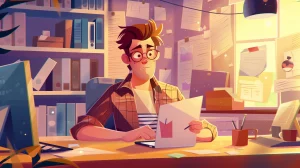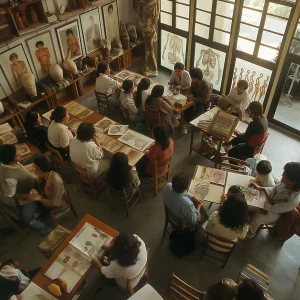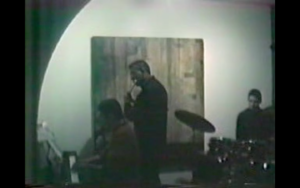
When AI becomes more human than us
AI generated illustration When AI becomes more human than us By Eduardo Menendez Throughout my professional career, I have spent a considerable amount of time
A few years ago I received a Christmas gift. It was a bottle of champagne and a box of chocolates, the latter of which really caught my attention. It was an extremely well-designed package: the graphics, folding, cuts, and colors. Inside, the box was decorated with layers of paper and origami-like details; and each chocolate was beautifully wrapped. As I carefully ‘undressed’ the multi-layered gift, I thought that this could be a package designer’s dream job. When I finally got to the chocolate, I found each piece had a unique design painted on it. The presentation was so intricate, I almost didn’t want to eat it. I felt badly ruining the layout or even leaving my fingerprints on such a work of art. But since I am a foodie, I found the courage to eat one. The taste didn’t match the superbly designed packaging…it was actually very disappointing. The gap between the visual and the flavor was so big that I could never buy it as a gift (even though I value good design). An average Hershey bar tasted like a delicacy in comparison.
This experience sparked memories of many situations I, as a UX professional, have faced with creative teams, specifically within agency work. Even at this point in the 21st century, I am surprised to encounter people more concerned with the aesthetics of the design rather than the purpose it serves its audience/user. There are still senior-level creative people who focus on the visuals and put aside the most important components of design: problem-solving; serving a goal; being a medium to engage with a product or service; and ultimately moving the business towards a set of actions that will create revenue. Don’t get me wrong, I do believe in good visual design as part of the customer experience and overall impact of the brand, however, it cannot be the central aspect of the creative input; it needs to be part of an ecosystem/engine. Unfortunately I have seen this happen more often than I ever would have imagined. And surprisingly, I keep making the same observation: creativity is not only about special effects. It seems some have failed to understand this very basic point.
A while ago, I was in a creative review for a website. At the end of the three-hour meeting, the VP Creative Director, who hadn’t say a word the entire time, took a deep breath and confidently asked, “Can we add animation?” My colleagues and I kept silent to see if he would continue. Instead he remained quiet and smiled, satisfied with his input. It wasn’t the first time he had made a comment like this. But I hoped he might actually elaborate this time. This experience left me speechless and had me thinking for a while. How could a VP Creative Director give that type of input…that a website needs nothing more than animation in order to be creative? Internally we nicknamed him “Michael Bay” and joked about how, for some people, special-effects had become the centerpiece of creative.
Within the evolution of a designer, some get stuck at certain stages and don’t move forward – which is ok. We all go through this process and sometimes we just park where we feel most comfortable. However, for those who don’t worry about evolving and improving, their outdated and short-sighted decisions could negatively affect the success of a project. In many cases, the results are not immediately evident. They may leave with a smile on their face after a client applauds their presentation, but the real impact won’t be seen for weeks or even months post-launch when ROI results become available.
Understanding the ultimate goal of a project, the needs of the business and the expectations of the user, have all helped me become a better creative professional. When I look back on my early years of drawing, I remember how I would focus my attention on creating the shine effect on a jar instead of correctly composing my drawing within the space. I eventually learned that the foundation of a good drawing relies on the rhythm of lines within a space, that the paper (the context) plays an important role in the drawing.
I have come to better appreciate how this ecosystem of actions, visuals and feedback, develops and functions. Within this ecosystem, I experience a similar feeling to when someone is reading a good book or viewing a work of art: joy and pleasure. In other words, this understanding has allowed me to enjoy the craft of design so much more.

AI generated illustration When AI becomes more human than us By Eduardo Menendez Throughout my professional career, I have spent a considerable amount of time

AI generated graphic. Original documentation was lost. By Eduardo Menendez Back when the internet was still not as robust and omnipresent as it is nowadays,

The below article was posted on taylor-code.com blog on March 20th 2017. Being that this is the first UX article I am writing for this blog, I

Based on a fragment from the book The Tin Drum by Günter Grass. Many years ago, while I was still a dreamer, I had too